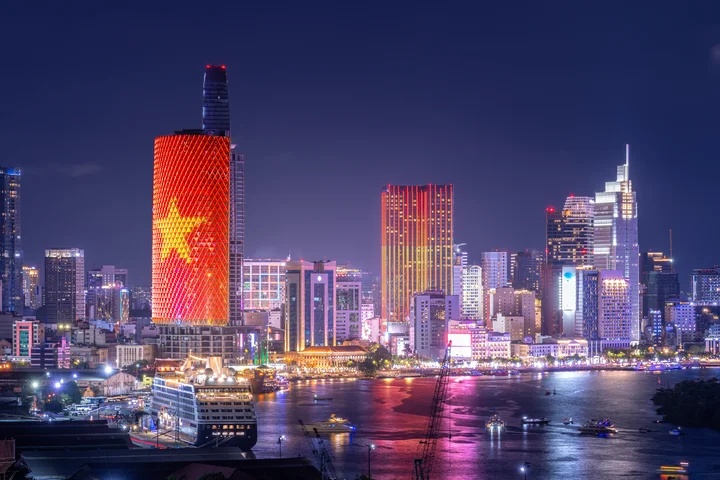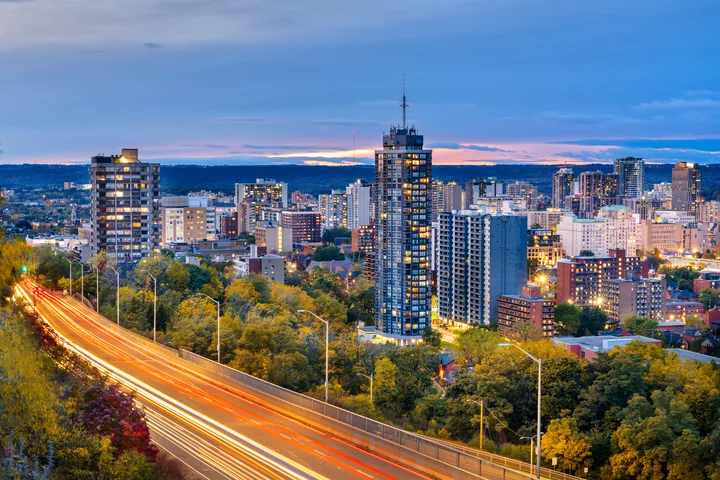Newsletter
Keep yourself update with our current news for Juwai IQI

Philippines Cavite Property 2025: South Luzon’s Real Estate Rising Star
Written by Emmanuel Andrew Venturina, Head of IQI Philippines Cavite is solidifying its position as one of the Philippines’ most dynamic property markets, driven by a strong local economy anchored in manufacturing, outsourcing and leisure industries. Improved road connectivity across South Luzon has transformed Cavite from a suburban extension of Metro Manila into a vibrant urban center and major satellite city, attracting national developers eager to invest beyond the capital. Industrial activity is expanding quickly, supported by manufacturing operations in automotive, semiconductors, and packaging, and strengthened further by new foreign investment pledges secured under the Marcos administration.These investments are expected to boost industrial space absorption, job creation and long-term economic activity across the province. This industrial momentum is directly fuelling residential demand, especially in General Trias, where lot-only developments have achieved 60 to 100 percent take-up and upscale projects priced between P4 million and P10 million account for nearly half of sales. Affordable and economic housing units priced from P580,000 to P3.2 million are also nearly sold out, with General Trias’ average house-and-lot price reaching P3.2 million per unit. With its strong residential base, proximity to industrial parks and expanding infrastructure, Cavite is positioned to become the next major real estate growth corridor in South Luzon. The rollout of transformative projects such as Calax and the Silang Interchange, expected to be fully operational by 2026, is set to elevate land values and accelerate the province’s property development cycle even further. For more countries updates:Download Now!
5 December

Pakistan Tourism and Coastal Real Estate Outlook 2025: Rising Demand and New Waterfront Hotspots
Pakistan’s tourism driven and coastal real estate sector gained strong momentum in 2025, supported by domestic travel demand and increasing global investor interest. Key destinations such as Gwadar, Karachi’s coastline and the northern mountain regions are rapidly emerging as real estate hotspots. Gwadar is undergoing a major transformation under CPEC, with the Gwadar Development Authority establishing a 2,585-acre Central Business District with valuable coastline frontage. Karachi’s luxury waterfront is also being reshaped by large-scale developments such as Emaar Oceanfront, a 75-acre seafront community offering premium apartments and penthouses, and Goldcrest Bays Sands, which provides sea-facing homes with private beaches and resort-style amenities. In Gwadar, Oshun by Eiwan is among the first beachfront resort-style residential developments, combining coastal and mountain views to capture rising CPEC-driven demand. Government-backed planning, sustainable infrastructure and smart-city frameworks are adding further confidence to the market. International capital is flowing in, highlighted by Gentry Beach, a US-based investor announcing a multi-billion-dollar plan for high-rise and mixed-use luxury projects in Karachi and Islamabad. Premium coastal developments prioritise master planning, eco-friendly design and lifestyle offerings, including signature towers and waterfront promenades. For investors, these projects offer dual income potential, combining short-term rental opportunities with long-term capital appreciation. With globally recognised brands like Emaar involved and smart-city infrastructure underway, Pakistan’s coastal and tourism-anchored real estate sector is positioned for strong premium returns as the country opens its coastline to more institutional and overseas capital. For more countries updates:Download Now!
5 December

Hanoi and HCMC Prices Surge Past VND100 Million per Sqm
Written by Dustin Trung Nyugen, Head of Vietnam Apartment prices in Hanoi have surged sharply over the past decade, with values now exceeding VND100 million (US$3,786) per sqm across several major projects. Some developments have seen prices rise more than 2.5 times since launch, and year-on-year gains remain substantial, including 39% at Royal City, 36% at Park View City, 32% at Hinode City, and 29% at Times City. This rapid appreciation has firmly established VND100 million per sqm as the new benchmark for mid- to high-tier apartments in the capital. In Ho Chi Minh City, the trend is even more pronounced. More than 50% of the 5,500 units launched last quarter were priced at or above VND100 million (US$3,800) per sqm, reinforcing the dominance of the high-end segment. Average prices in HCMC climbed 21% to VND96 million per sqm, with surrounding provinces Ba Ria–Vung Tau and Binh Duong showing similar upward momentum after being merged administratively with the city. Together, these developments indicate a sustained upward trajectory for Vietnam’s residential market, driven by strong demand and limited supply in key urban centres.For more countries updates:Download Now!
5 December

Canada Q4 2025 Canada Market Outlook: Stabilising National Trend, Mixed Regional Performance
Written by Yousaf Iqbal, Head of IQI CanadaCanada’s housing market held steady in October 2025, with national sales dipping 0.8% and average prices settling at C$676,000, slightly higher than September but 1.5% below last year. The Bank of Canada’s move to lower rates to 2.25% provided some relief for buyers, although affordability remained stretched in major cities. Toronto and Vancouver continued to soften as new listings increased and prices adjusted downward, while Prairie markets like Calgary and Edmonton remained notably strong. Across the country, moderating rents and rising supply supported more balanced market conditions. Overall, early signs of stabilisation are emerging as Canada moves toward 2026 under a lower-rate environment.Regional dynamics showed clear divergence. The GTA saw a 9.5% drop in sales and a 7.2% decline in average prices, reinforcing a buyer-friendly landscape as inventory grew and the MLS® HPI fell 5% year-over-year. Vancouver posted a 14% drop in sales and a 13.2% rise in active listings, pushing prices lower across all housing types. Meanwhile, Quebec stood out as the strongest performer, with sales rising 8% and prices increasing across all categories: single-family homes up 8%, condos up 5%, and plexes up 17%.These contrasting trends highlight Canada’s multi-speed market, shaped by affordability gaps, inventory shifts, and varying local economic conditions.For more countries updates:Download Now!
5 December

Australia’s Housing Market Strengthens as Recovery Picks Up Pace
Written by Lily Chong, Head of IQI AustraliaAustralia’s housing market continued its strong recovery in October, with national home values climbing 1.1% — the sharpest monthly gain since June 2023. This marks a turning point since the first rate cut in February, which reignited growth momentum after a brief slowdown late last year. According to Cotality’s research director, Tim Lawless, housing values have surged 6.1% nationally over the past year, with every capital city and regional market posting gains in October — led by Perth (+1.9%) and Hobart (+0.3%). Across the combined capitals, the median dwelling value rose by over $10,000 in October alone, bringing total growth since February to nearly $54,000. The rise is largely driven by strong demand amid tight supply, with home sales tracking 3.1% above the five-year average while listings remain 18% below average. This imbalance has continued to favour sellers, reflected in solid auction clearance rates hovering between the high 60s and low 70s.Additional momentum has come from the expanded 5% Deposit Guarantee Scheme, effective from October 1, boosting activity among first-home buyers and investors. Growth has been most pronounced across the lower and middle price brackets, where affordability and incentives are strongest, while the premium segment shows more moderate increases. Looking ahead, market analysts expect housing values to remain on an upward trend into early 2026, supported by limited housing supply, resilient buyer demand, and stable lending conditions. However, affordability pressures and future interest rate movements will continue to influence the pace of growth across different price segments and cities. For investors and homeowners alike, Perth’s property market presents exciting opportunities. Whether you’re considering selling, buying, or investing, now is the time to explore your options. Contact our team at sales@iqiwa.com.au to discuss your property goals today. For more countries updates:Download Now!
5 December

Juwai IQI Newsletter – Real Estate Market – December 2025
The global real estate markets continued to show encouraging momentum, with many countries experiencing rising home values, stronger buyer confidence, and healthier market activity as conditions gradually improve.Explore the latest market trends and expert insights inside the December 2025 Juwai IQI Monthly Newsletter.Click here to discover moreDownload Now!
5 December

Juwai IQI Newsletter – Real Estate Market – November 2025
The global real estate market showed varied performance in November, with certain regions experiencing growth while others remained steady.Discover in-depth insights on the latest update by reading Novmber 2025's monthly Juwai IQI newsletter.Click here for more!Download Now!
6 November

Where Investors Get the Most from Low Interest Rates
Written by Dave PLatter, Global PR DirectorThe South China Morning Post last month wrote a fascinating article about how the rate-cutting cycle at the U.S. Federal Reserve affects investors. One of the experts cited in the article by Asia's largest English-language news source was IQI’s own Co-Founder and Group CEO, Kashif Ansari. “The USA, UK, Canada, and the UAE all are in a rates-easing cycle,” he told the Post. “That gives borrowers more buying power as we go into 2026. “Typical mortgage interest rates this month vary from as low as 1.8% in Japan to as much as 6.5% in the USA, with offshore buyers who have no local income typically paying up to 2 percentage points more. For buyers looking at the USA, Mr. Ansari said many investors consider it a good time to purchase, especially if they can pay with cash. The rental market is robust and provides sustained rental yields, and with rates easing, they will be able to refinance later at a lower rate. Regarding the UK, he said, “The UK has a chronic housing shortage and lower interest rates than the United States. That also makes it an attractive rental market, especially if you can purchase a relatively high-yielding property. “ Mr. Ansari said Japan is attractive at the moment because the yen is weak and properties in the major cities deliver high yields. “But foreign investors in Japan should move with speed because some locals are calling for a foreign buyer ban, similar to Korea’s recently announced partial ban.” For more of Mr. Ansari's insights on interest rates, please see the provided table. CountryTypical Prevailing Mortgage Rates* Next Rate Decision Date United States (Fed) ~6.35–6.50% The Fed eased rates by 25 basis points on 18 September. United Kingdom (BoE) ~4.3% (avg effective) The Bank of England kept rates unchanged on 18 September. Canada (BoC) ~3.8–4.2% The Bank of Canada eased rates by 25 basis points on 18 September. Australia (RBA) 5.68% The RBA left the cash rate unchanged at 3.60 per cent on 30 September. Japan (BoJ) ~1.8–2.0% The Bank of Japan left rates unchanged on 19 September. United Arab Emirates (CBUAE) ~4.0–5.5% The CBUAE cut by 25 basis points on 18 September. Singapore (MAS) 2.60% (HDB) / ~2.1–2.3% (bank 2-yr fixed) 2025-10-14 Thailand (BOT) ~5–6% 2025-10-08 Malaysia (BNM) ~3.8–4.5% 2025-11-06 New Zealand (RBNZ) ~4.9–5.3% 2025-10-08 Discover more insights here!Download
31 October

































